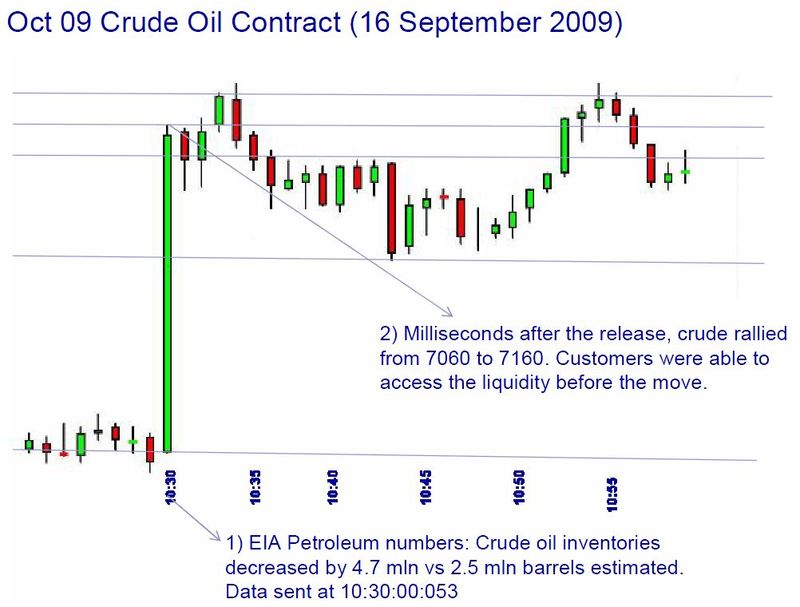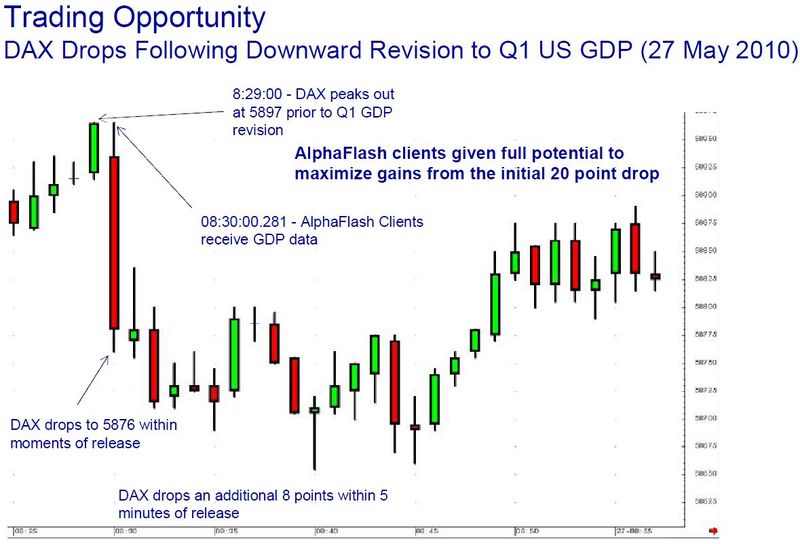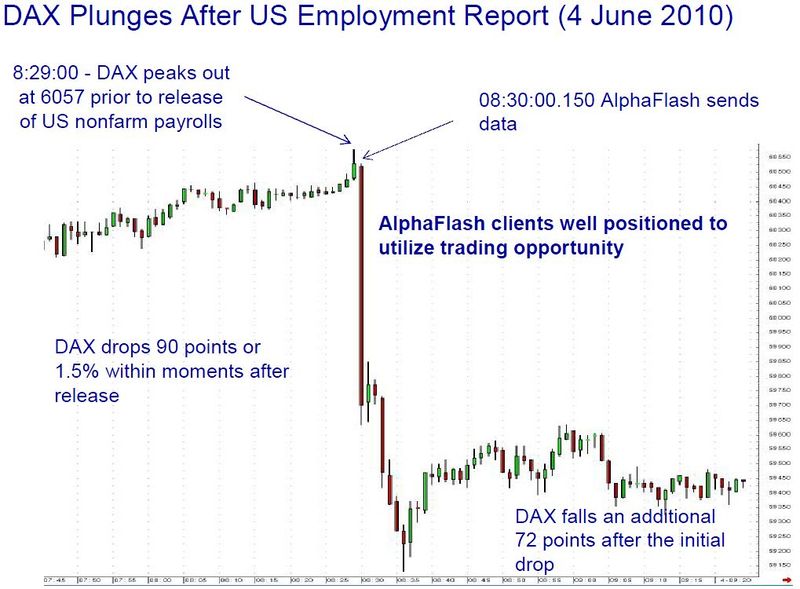
More on the Deutsche Börse open day and this time it’s the impact of algo news.
Most of you will know about algo trading. If you don’t, it’s just a fancy way of saying automated trading and if you checkout the stats, 80% of trading in London is automated today compared to just 40% four years ago and virtually none a decade ago.
So algorithmic trading – the automation of trading strategies such that they run all day on machines whilst people work out tomorrow’s trading strategies – is the de facto way of trading these days. It is the reason why Chi-X has jumped from zero to hero since MiFID allowed new exchanges to enter the European markets, and why BATS now gets over ten percent of US equities trading.
This is good.
Or some say it’s bad.
Either way it’s different.
Then along come algorithmic newsfeeds.
What are they?
Well, there’s quite a few with Elementized from Dow Jones, NewsScope Direct from Thomson Reuters, BN Direct from Bloomberg and a few others.
Deutsche Börse has one as well, called AlphaFlash.
AlphaFlash is their low latency algo newsfeed, and it delivers more than 150 market moving indicators and releases from around the globe. The data covers mainly North American and European markets, although further expansion is planned with Chinese indicators in beta testing.
Key data points include: US Department of Labor, US Department of Treasury, US Department of Commerce, The Conference Board, National Association of Realtors, USDA, Statistics of Canada, Bank of Canada, European Central Bank, Bank of England, Office for National Statistics, Z.E.W., Institute for Economic Research Ifo, German Economy Ministry, Eurostat and more. China’s test data includes coverage of the Consumer Price Index, Fixed-Asset Investment, Industrial Output, Producer Price Index and Retail Sales.
The AlphaFlash service is developed with the fully accredited wholly owned subsidiaries of Deutsche Börse, news agencies Market News International (MNI) and Need to Know News (NTKN). MNI was acquired in January 2009 and NTKN in November 2009, with both agencies employing journalists who have direct access to government lock-up rooms and privileged embargoed releases.
These financial reporters work with a dedicated team of IT specialists to deliver ultra fast direct and easy integration of market moving data into algo trading applications, using a newly designed and optimized network topology.
What ie means in practice is that whenever anything happens taht might change stock prices – unemployment news, inflation news, GDP news, house price news, etc – then the big algo trading bulge bracket brokers get it straight away into their trading systems so that they can BUY or SELL before everyone else.
Here are three real examples of the systems working in practice.
First, September 2009.
The US Energy Information Administration (EIA) released crude oil numbers on 16th September 2009, with a view that crude oil inventories decreased by 4.7 million barrels, rather than the 2.5 million that analysts had been estimating. That was good news for prices as less oil means its more expensive, so when the news arrived at 10:30, AlphaFlash sent it to the algo systems of their traders at 10:30:00:053 – in other words 53 milliseconds after the release.
Result: crude oil prices went up 100 points, and some lucky folks were able to get that liquidity before the move (doubleclick picture to see larger version).

Second example: 27th May 2010.
Everyone knows that the US Administration is announcing the first quarter GDP figures at 08:30 EST.
Not everyone can know what the figures are until 8:30:00:0000000000 ...
Whoever knows them first can therefore make a buck.
Guess what?
The figures come out and they are bad.
The DAX drops almost 30 points in five minutes, with most of that taking place in the first second after release.
That’s because the AlphaFlash guys got the news 281 milliseconds after release and their algo systems were immediately plugged to sell if it was bad.

Final example: 4th June 2010.
This time it’s US employment figures.
Guess what?
They’re bad too!
The DAX falls 90 points, or 1.5%, within milliseconds and a further 72 points within minutes.
AlphaFlash traders had the news in their feeds and speeds within 150 milliseconds.

What does all of this mean?
IF YOU ARE TRADING AND DON’T HAVE THE BUDGET FOR THE MOST ADVANCED TECHNOLOGY, DON’T TRADE.
Or more reasonably, don’t trade in things or on days where news that is predictable – inflation, jobs, housing, etc – is being released as you can’t predict whether it’s good or bad news, but you can predict that, whatever the news is, it’s going to provide rewards for those with algo engines at the expense of those without.
Chris M Skinner
Chris Skinner is best known as an independent commentator on the financial markets through his blog, TheFinanser.com, as author of the bestselling book Digital Bank, and Chair of the European networking forum the Financial Services Club. He has been voted one of the most influential people in banking by The Financial Brand (as well as one of the best blogs), a FinTech Titan (Next Bank), one of the Fintech Leaders you need to follow (City AM, Deluxe and Jax Finance), as well as one of the Top 40 most influential people in financial technology by the Wall Street Journal's Financial News. To learn more click here...

